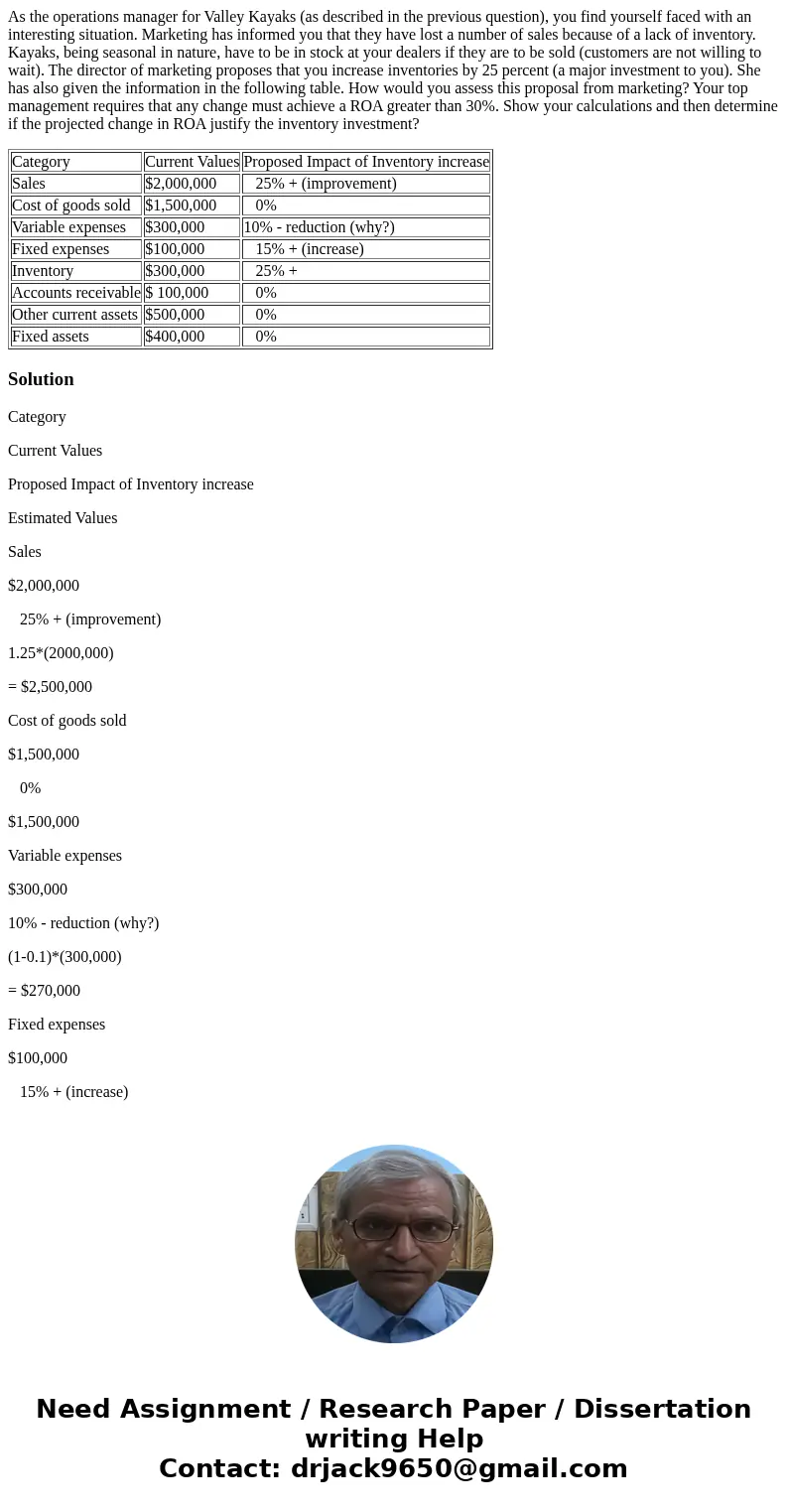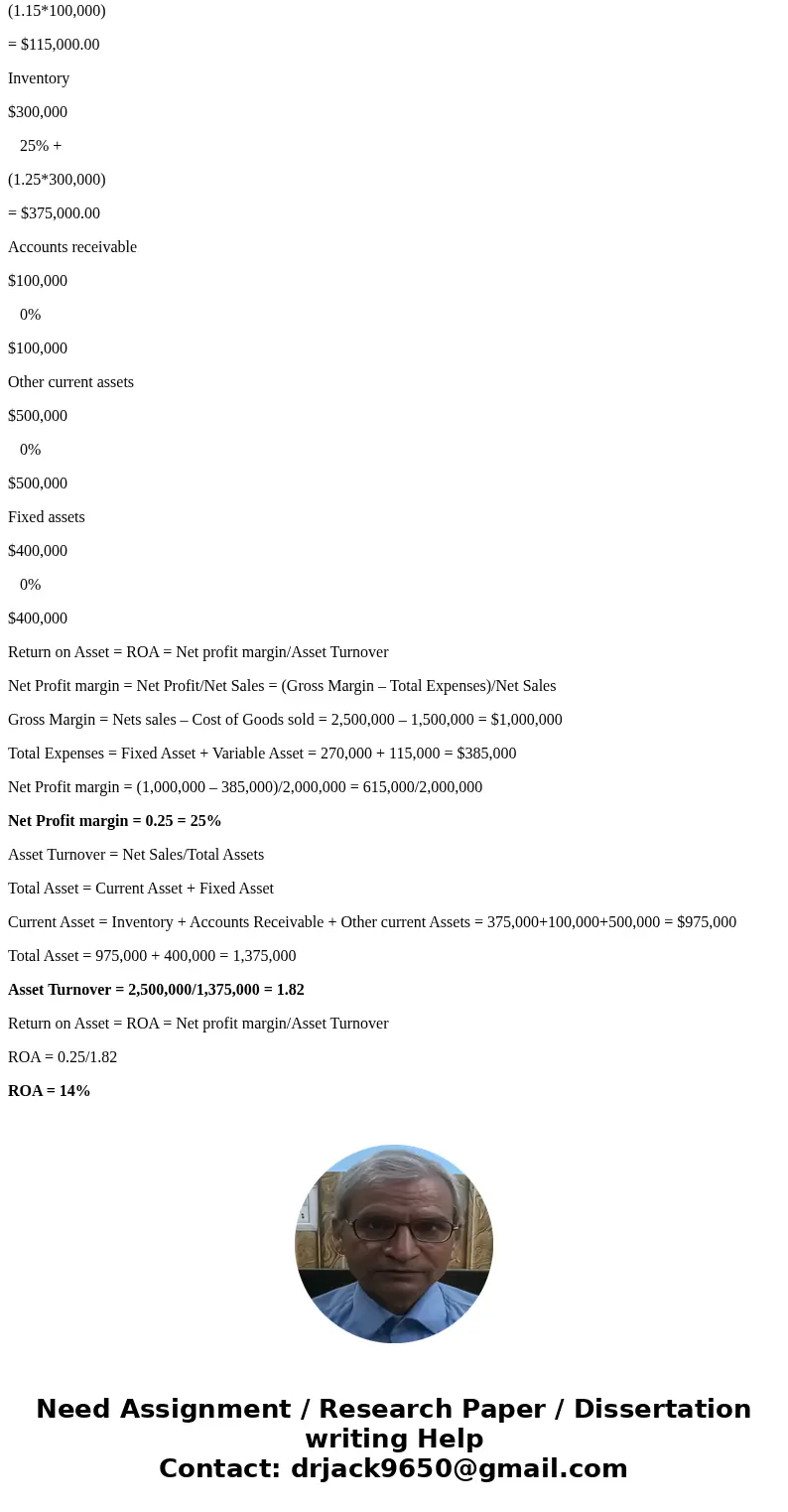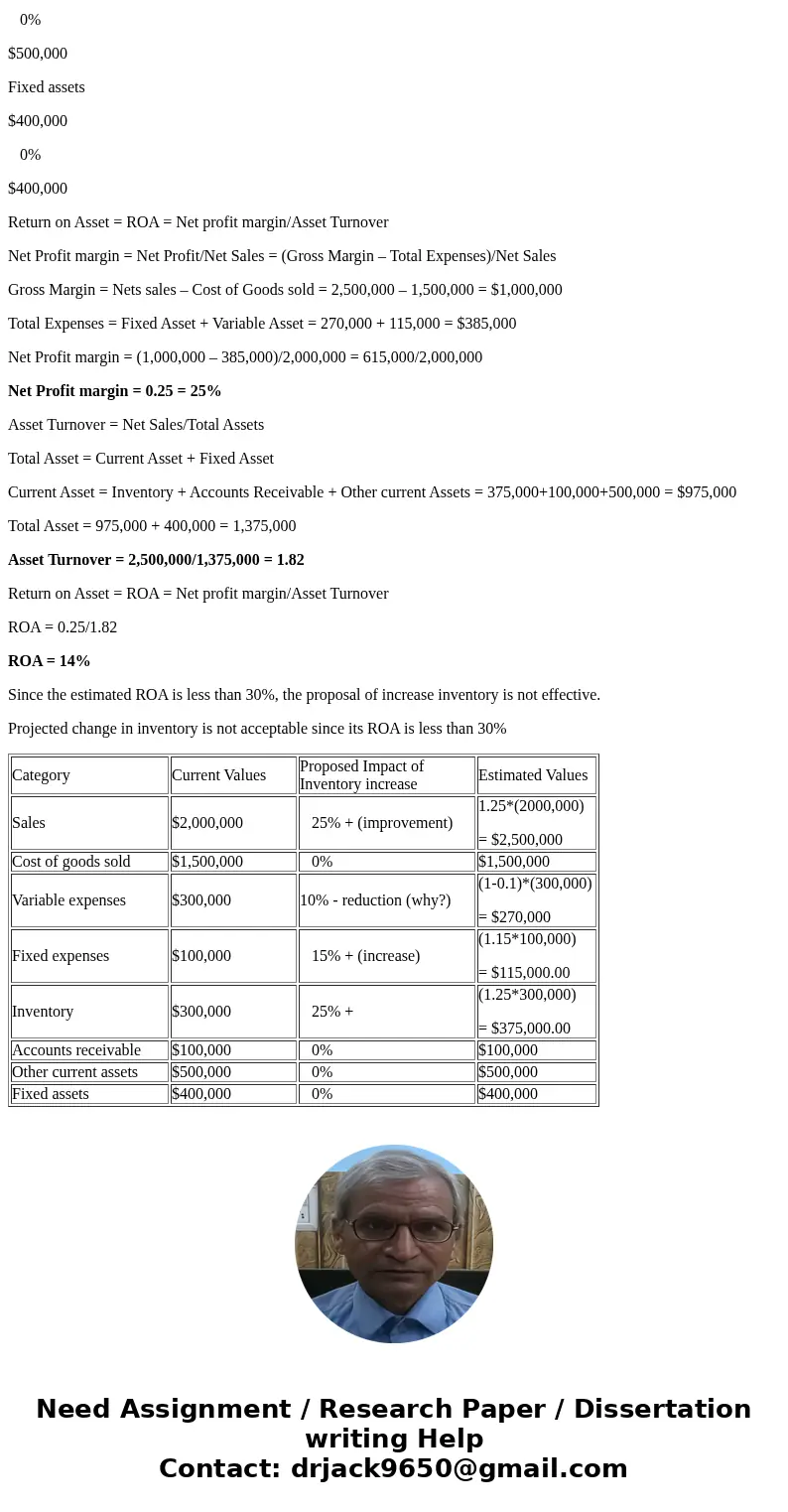As the operations manager for Valley Kayaks as described in
As the operations manager for Valley Kayaks (as described in the previous question), you find yourself faced with an interesting situation. Marketing has informed you that they have lost a number of sales because of a lack of inventory. Kayaks, being seasonal in nature, have to be in stock at your dealers if they are to be sold (customers are not willing to wait). The director of marketing proposes that you increase inventories by 25 percent (a major investment to you). She has also given the information in the following table. How would you assess this proposal from marketing? Your top management requires that any change must achieve a ROA greater than 30%. Show your calculations and then determine if the projected change in ROA justify the inventory investment?
| Category | Current Values | Proposed Impact of Inventory increase |
| Sales | $2,000,000 | 25% + (improvement) |
| Cost of goods sold | $1,500,000 | 0% |
| Variable expenses | $300,000 | 10% - reduction (why?) |
| Fixed expenses | $100,000 | 15% + (increase) |
| Inventory | $300,000 | 25% + |
| Accounts receivable | $ 100,000 | 0% |
| Other current assets | $500,000 | 0% |
| Fixed assets | $400,000 | 0% |
Solution
Category
Current Values
Proposed Impact of Inventory increase
Estimated Values
Sales
$2,000,000
25% + (improvement)
1.25*(2000,000)
= $2,500,000
Cost of goods sold
$1,500,000
0%
$1,500,000
Variable expenses
$300,000
10% - reduction (why?)
(1-0.1)*(300,000)
= $270,000
Fixed expenses
$100,000
15% + (increase)
(1.15*100,000)
= $115,000.00
Inventory
$300,000
25% +
(1.25*300,000)
= $375,000.00
Accounts receivable
$100,000
0%
$100,000
Other current assets
$500,000
0%
$500,000
Fixed assets
$400,000
0%
$400,000
Return on Asset = ROA = Net profit margin/Asset Turnover
Net Profit margin = Net Profit/Net Sales = (Gross Margin – Total Expenses)/Net Sales
Gross Margin = Nets sales – Cost of Goods sold = 2,500,000 – 1,500,000 = $1,000,000
Total Expenses = Fixed Asset + Variable Asset = 270,000 + 115,000 = $385,000
Net Profit margin = (1,000,000 – 385,000)/2,000,000 = 615,000/2,000,000
Net Profit margin = 0.25 = 25%
Asset Turnover = Net Sales/Total Assets
Total Asset = Current Asset + Fixed Asset
Current Asset = Inventory + Accounts Receivable + Other current Assets = 375,000+100,000+500,000 = $975,000
Total Asset = 975,000 + 400,000 = 1,375,000
Asset Turnover = 2,500,000/1,375,000 = 1.82
Return on Asset = ROA = Net profit margin/Asset Turnover
ROA = 0.25/1.82
ROA = 14%
Since the estimated ROA is less than 30%, the proposal of increase inventory is not effective.
Projected change in inventory is not acceptable since its ROA is less than 30%
| Category | Current Values | Proposed Impact of Inventory increase | Estimated Values |
| Sales | $2,000,000 | 25% + (improvement) | 1.25*(2000,000) = $2,500,000 |
| Cost of goods sold | $1,500,000 | 0% | $1,500,000 |
| Variable expenses | $300,000 | 10% - reduction (why?) | (1-0.1)*(300,000) = $270,000 |
| Fixed expenses | $100,000 | 15% + (increase) | (1.15*100,000) = $115,000.00 |
| Inventory | $300,000 | 25% + | (1.25*300,000) = $375,000.00 |
| Accounts receivable | $100,000 | 0% | $100,000 |
| Other current assets | $500,000 | 0% | $500,000 |
| Fixed assets | $400,000 | 0% | $400,000 |



 Homework Sourse
Homework Sourse